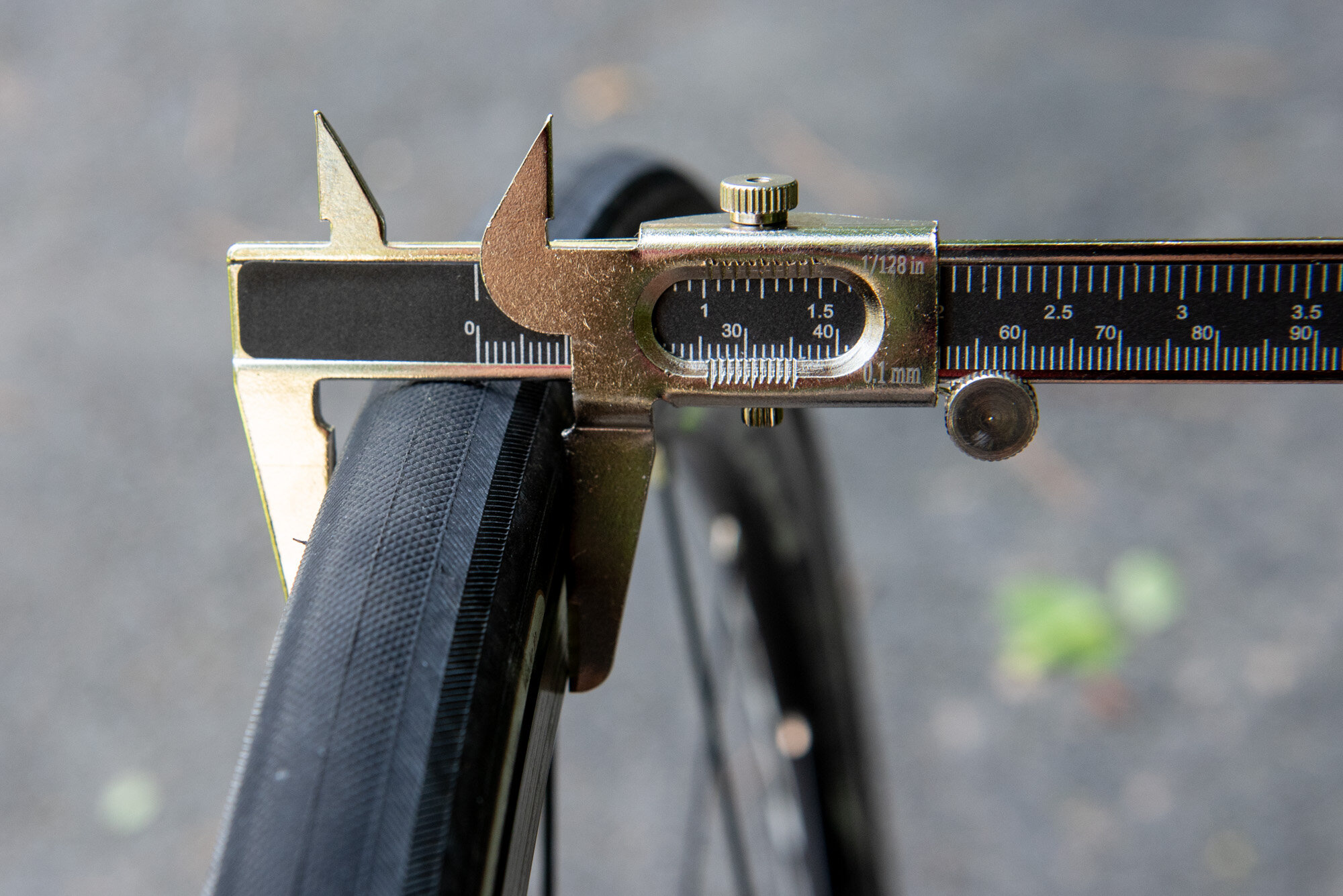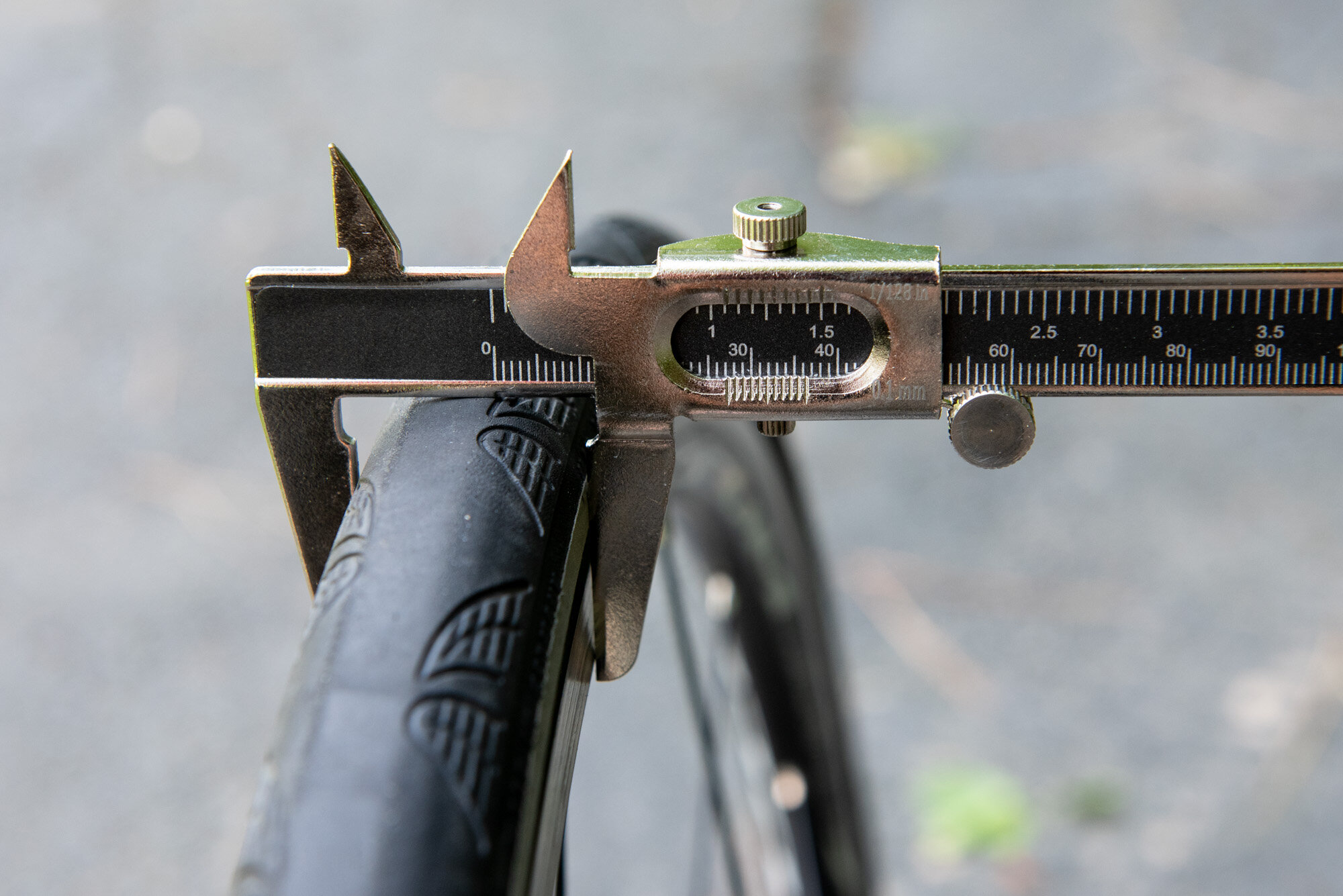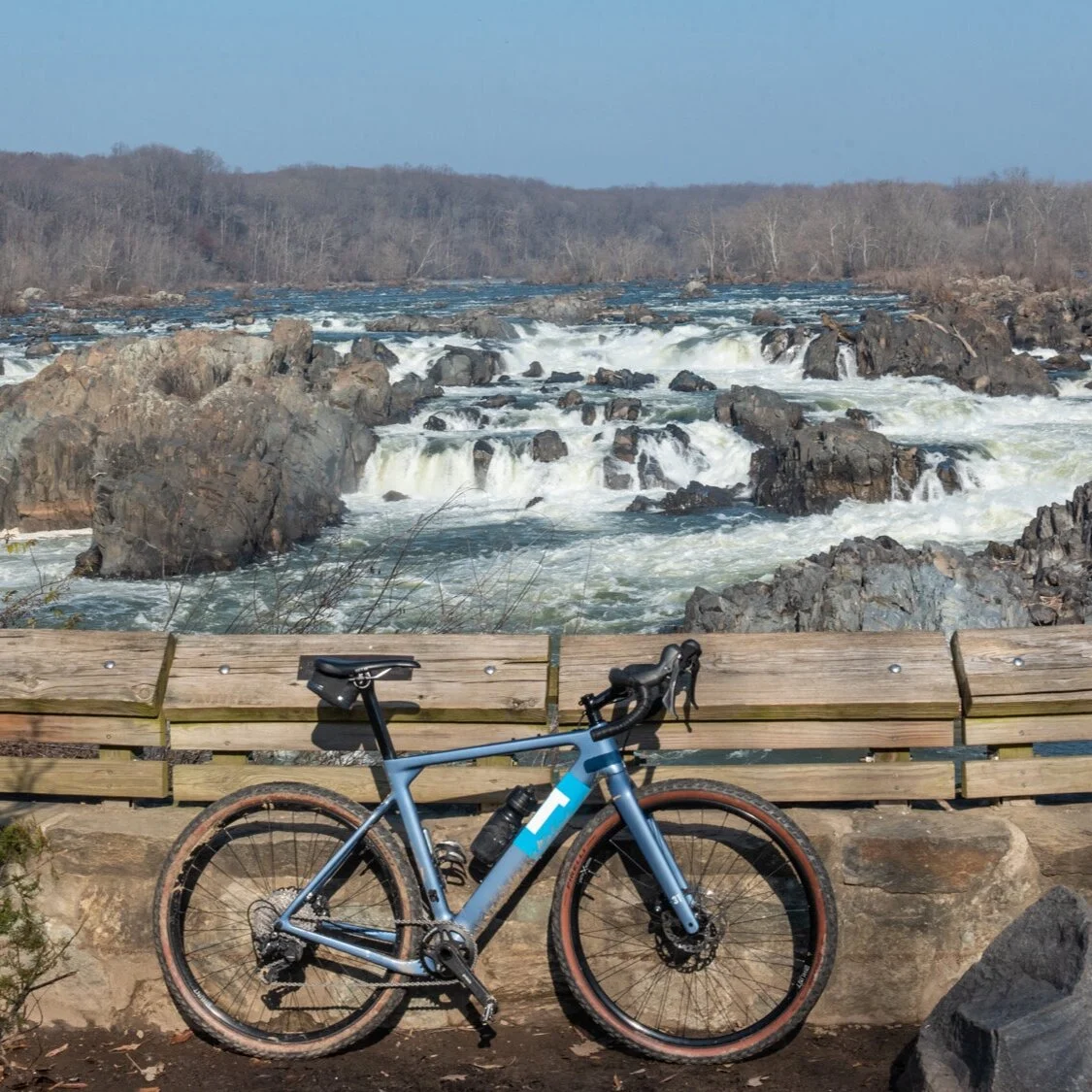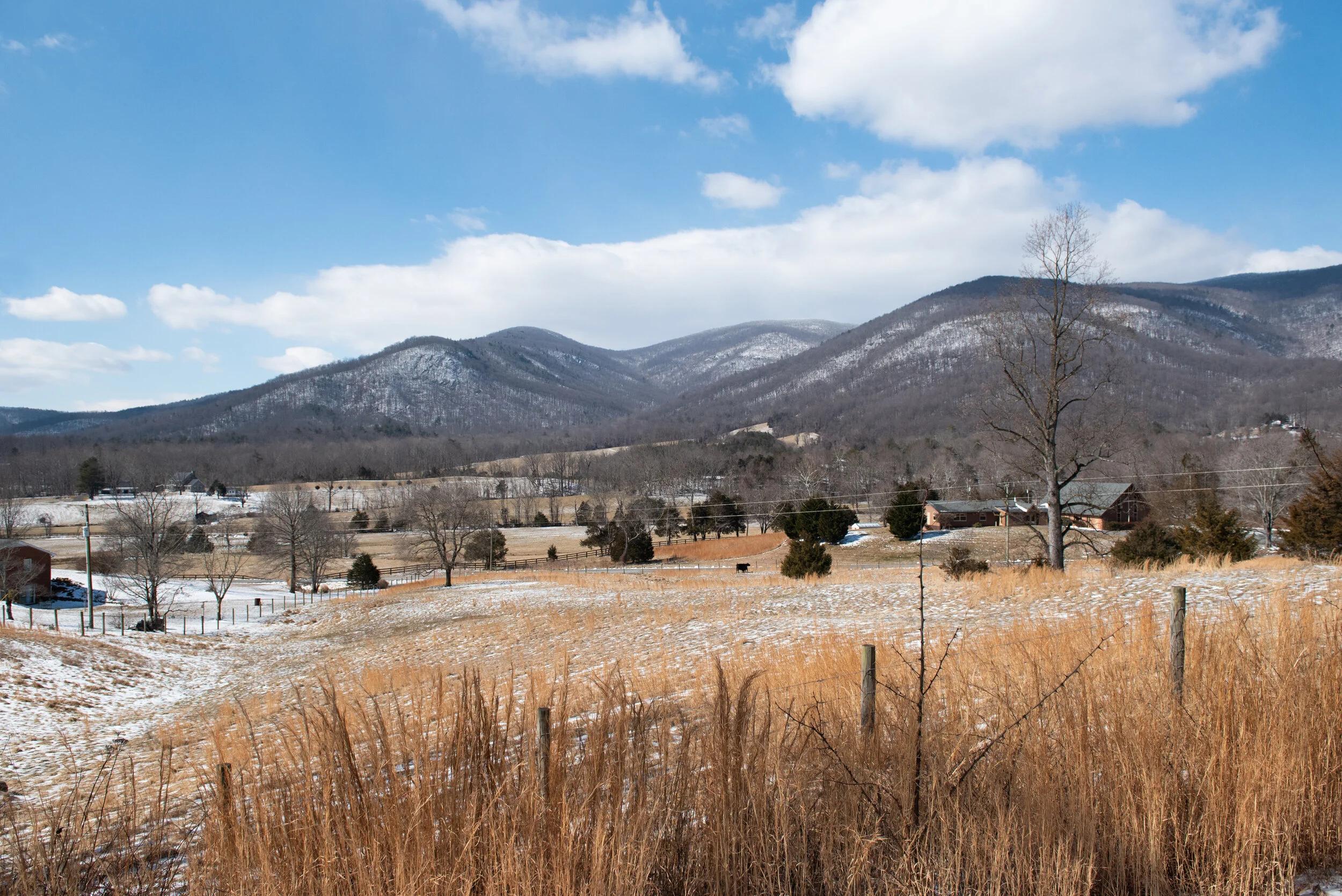Panaracer GravelKing 700x26C Tire Review: Gravel or Road Tire?
Disclaimer: This post contains affiliate links, through which we earn a commission.
A few months ago I had the crazy idea that I wanted to use my standard road bike for a few mild gravel rides. After seeing hardcore gravel riders crush races like the Belgian Waffle Ride (San Diego edition), while on board regular road bikes, it sparked my interest to also give it a go. My trusty old road bike, the Trek Domane 4.0, has already been through a few experiments, and you might have seen my previous post about the (failed) project to convert this bike into a Triathlon/TT set-up. I was curious to see how much more versatility I could squeeze out of this bike. Could I take a traditional road bike and turn it into something that was semi-usable for gravel riding?
I knew that my options for gravel riding with a standard road bike would be fairly limited, since the roads in my area already forced me to fit some wide 40mm tires to my gravel bike. Mild gravel, as stated in my opening-line, would be the only thing that my bike would be able to endure, especially with the rim-brakes fitted to the bike. In order for this set-up to work, the tire choice would be critical. The first order of business was to look for the widest possible tire that I could run on my Trek Domane 4.0.
The Tire Contenders
My discussion will be based on a traditional road bike (with rim-brakes) since most modern-day disc brake road bikes are easily able to accommodate tire sizes of up to 30mm. The luxury of fitting such wide tires on a standard road bike is, however, not an option, and the widest that many riders will be able to squeeze into the frame is a 28mm tire. This can be a risky move, since the additional tire size can easily cause rubbing against the frame. I can make that statement from experience and the picture serves as proof.
The first tire in the experiment (responsible for the frame rub) was the Continental GatorSkin 700x28C tire. Clearly this tire choice wasn’t the best option and I had to find another solution. The challenge with finding the correct tire size is that the width as stated on the tire, and the actual size, once inflated fully, does not always match up. Tires have the tendency to balloon out and measure in wider than stated on the packaging. This discrepancy in tire sizes is driven by the internal width of the rim, the tire pressure and also the manufacturer’s honesty. In a search for better tire measurements, 3T developed two new definitions when it comes to tire sizing: WAM (width as measured) and RAM (radius as measured). I’ll spare you the details, but be sure to follow this link if you’d like to nerd out on some tire terminology. The bottom line was that the GatorSkin 700x28C tires, once inflated, didn’t have enough room in my Trek’s frame. Perhaps another brand that didn’t run as wide could be accommodated, but I decided to restrict my search from here on out to tires with stated width less than 28mm.
The field of tires suitable for gravel riding is greatly reduced once you opt to restrict selections to widths less than 28mm. After numerous searches, I discovered the Schwalbe Marathon Plus 700x25C tire that claimed some very promising puncture protection. The tread pattern on this tire also seemed to offer a bit more traction when compared to a slick tire. I could, however, not get myself to take the jump and buy this tire. I kept telling myself that there had to be another option that provided a bit more width, even if it was 1mm, which could allow me to run the tires at slightly lower pressures. It turns out I was right and my patience in the search for a slightly wider paid off...enter the Panaracer GravelKing 700x26C tire!
The Panaracer GravelKing+ 700x26C
On paper, the Panaracer GravelKing 700x26C tire had everything that I wanted to complete my road-to-gravel-bike experiment. The stated width for this tire hits the sweet spot between 25 and 28mm, exactly what I wanted. The tread pattern showed promise and although not as rough as the Schwalbe, it provided just enough grip to distinguish this tire from a slick road tire. Although the 700x26C is not tubeless compatible, it ranked very well with the other tires in the GravelKing product line-up. The biggest bonus of this slimmer tire is the weight that comes in at only 260g per tire. Given the narrower profile and lower weight, I was still left wondering which surface was best for this tire: road or gravel? Ultimately the product’s marketing line (“All day comfort and protection on dirt and gravel”) provided the last incentive that I needed to go ahead and buy the tires.
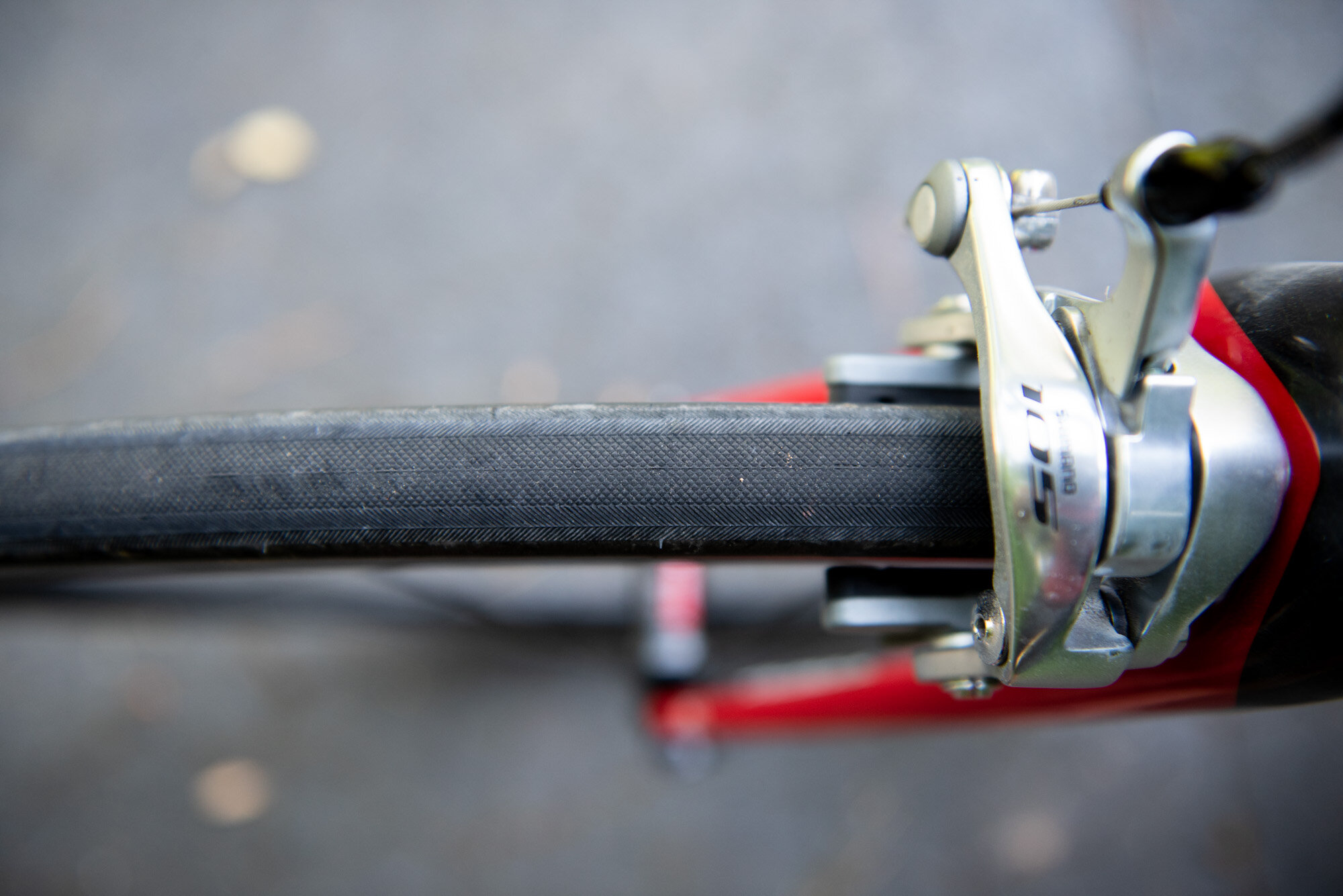
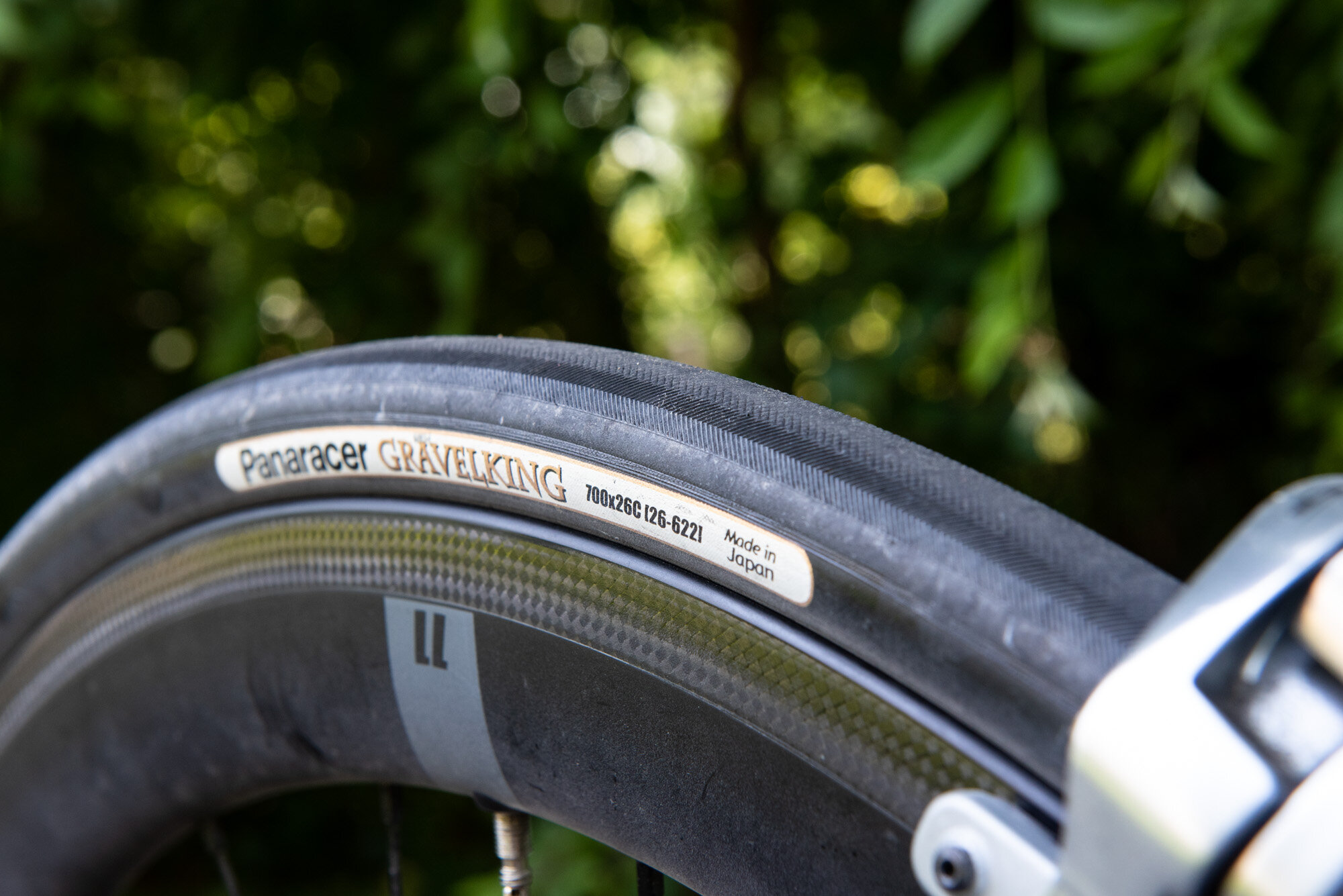
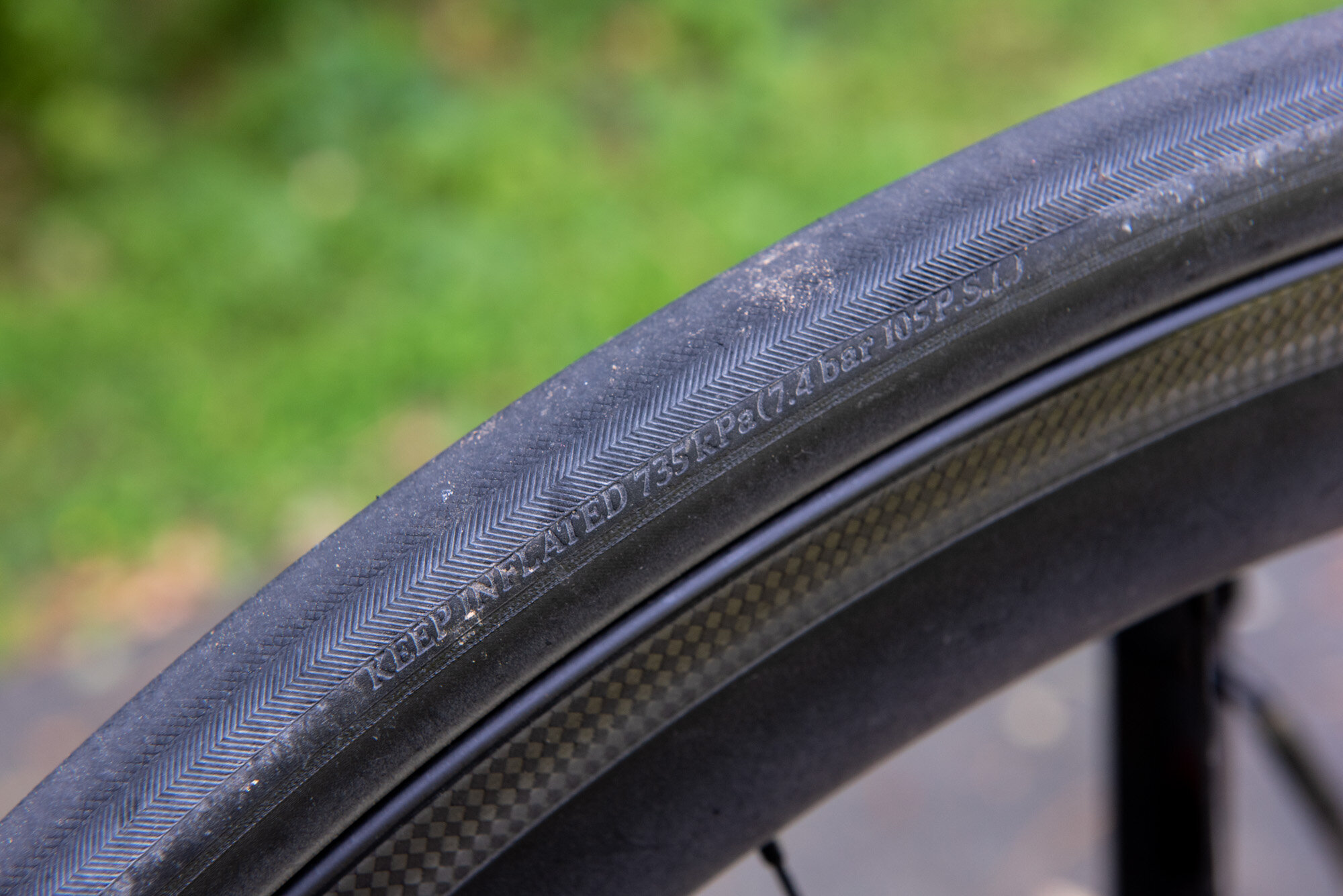
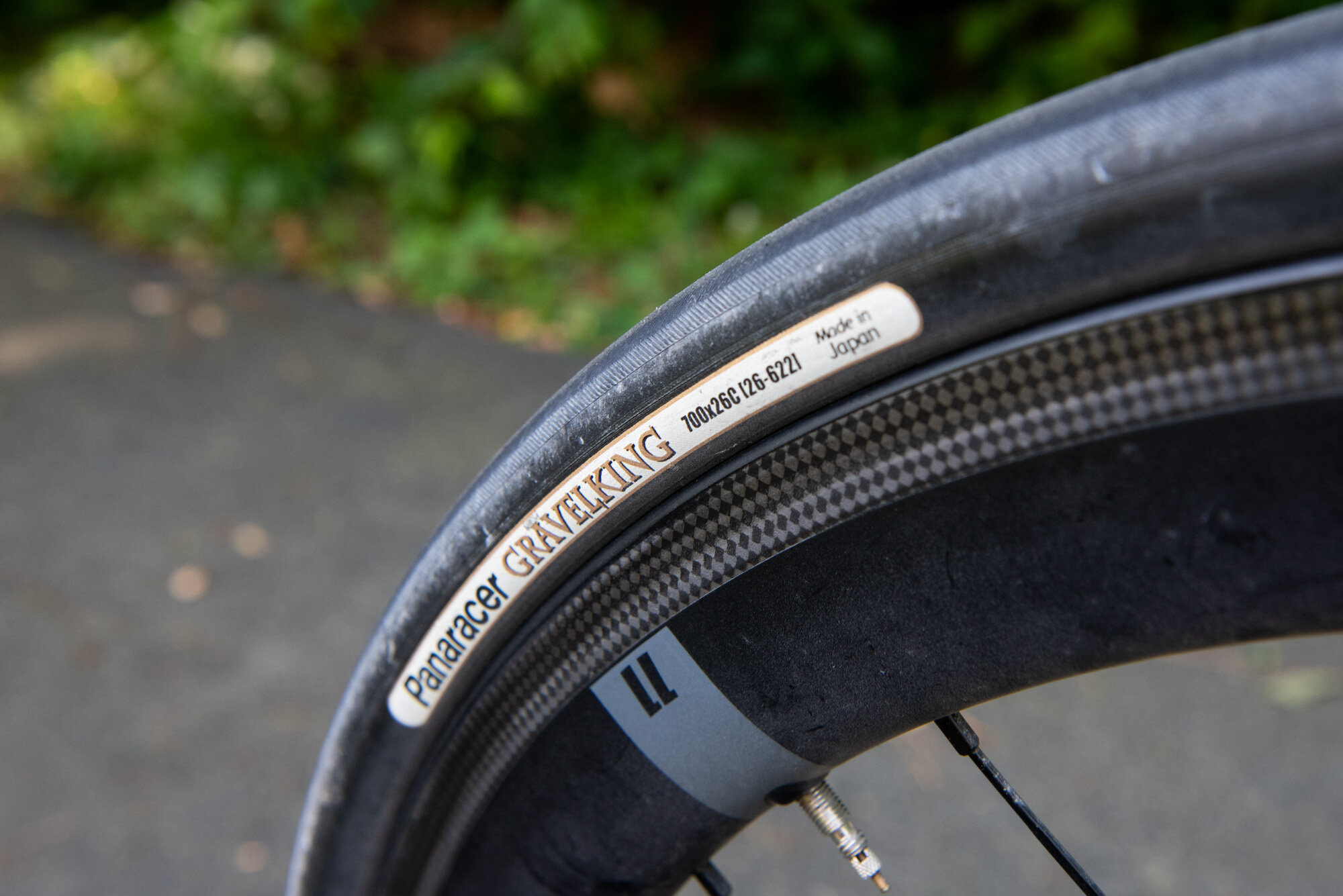
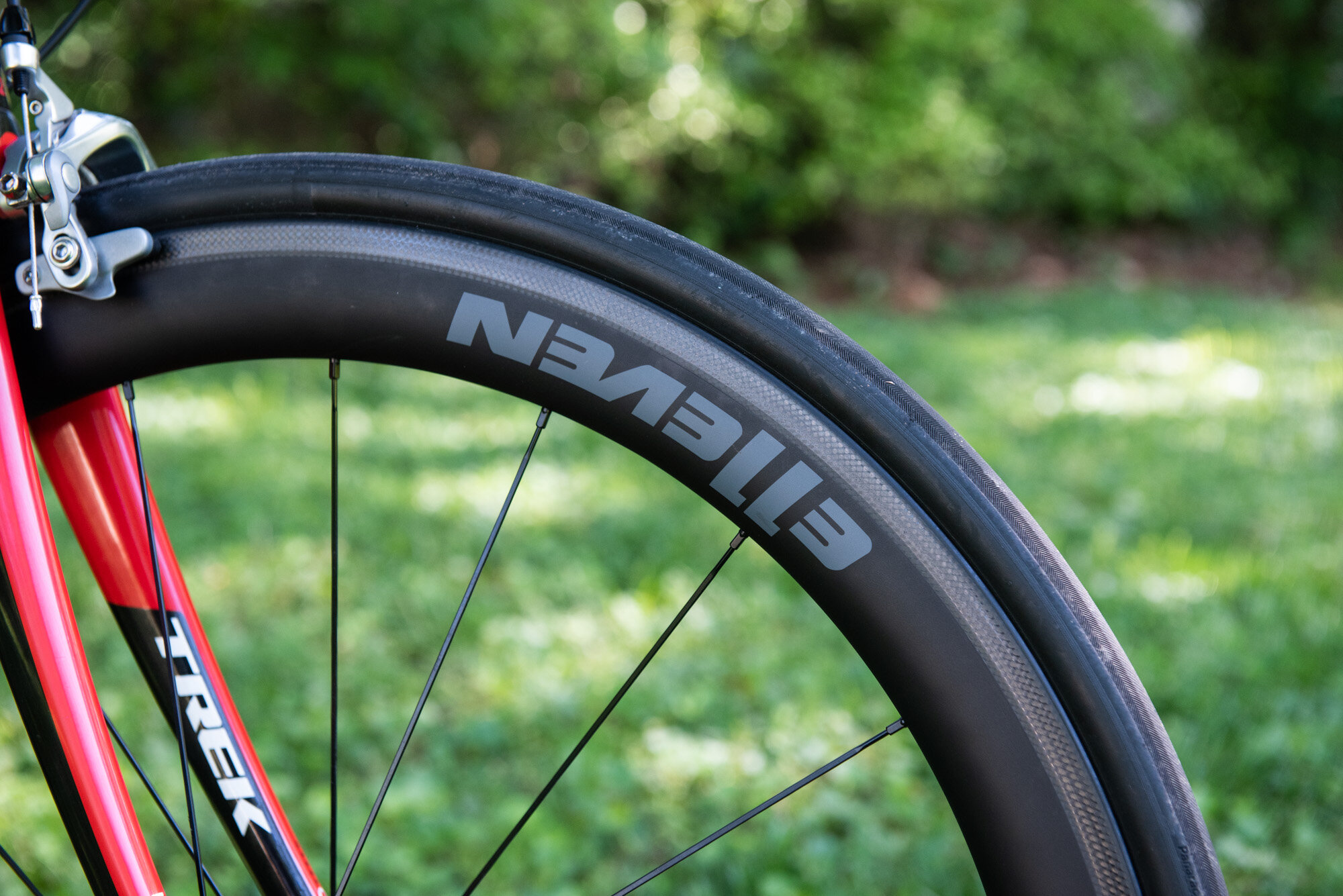
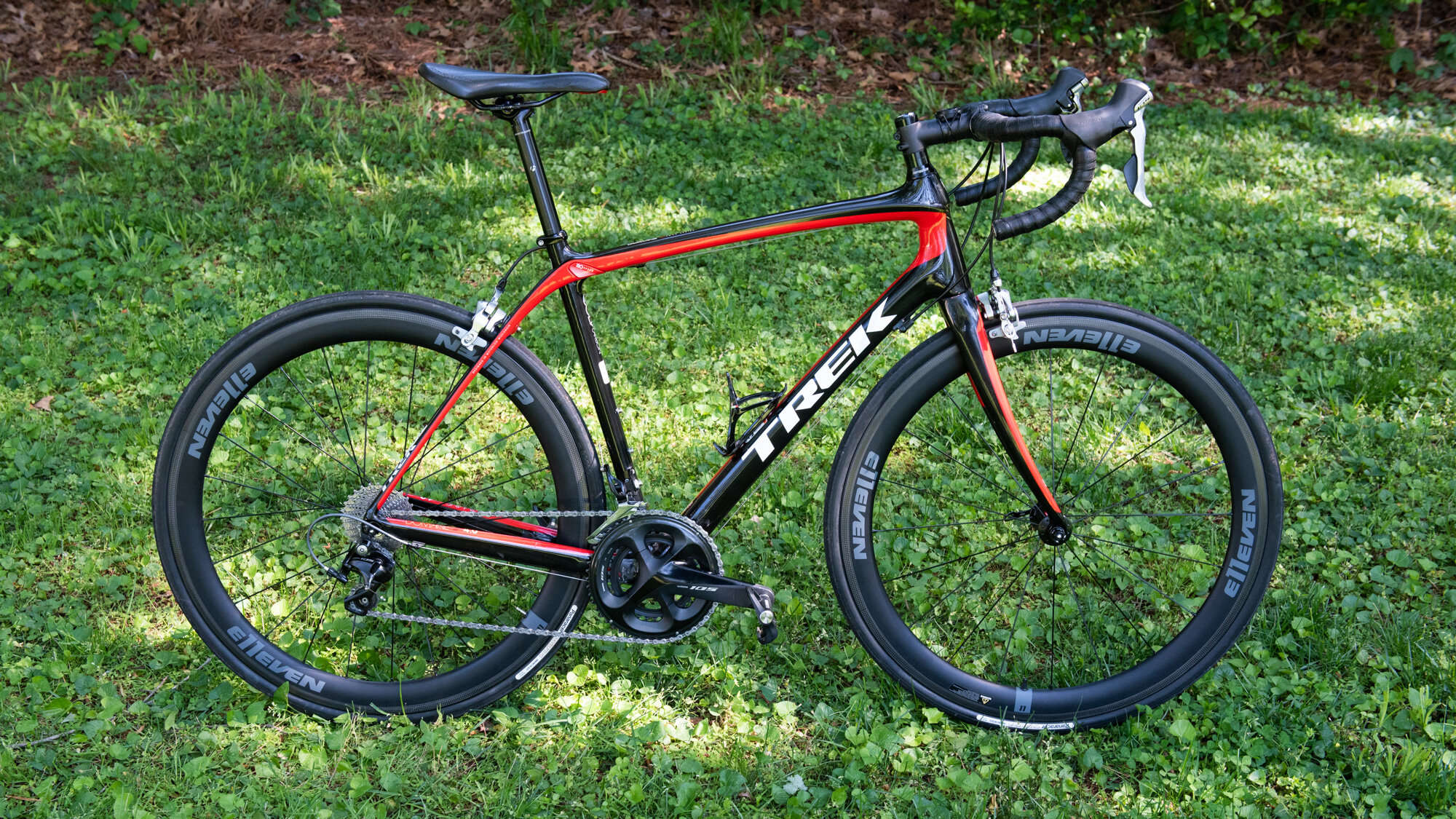
WAM!
I immediately realized that my hopes to fully utilize each millimeter of the additional width was wishful thinking when I started to fit the tires to my wheels. The WAM (width as measured) definitely came into play, but this time it wasn’t an issue that the tires were measuring too wide. Instead, they simply measured as stated. It was the Continental GP 4000s 700x25C that I was replacing that threw me off. During the installation I had the front wheel in one hand, fitted with the Panaracer 700x26C tires, and my back wheel fitted with Continental GP 4000s 700x25C, in the other hand. I didn’t need a measuring device to tell me that the 26C tire was narrower than the 25C tire. Even at a fairly high pressure (90PSI), the GravelKings still did not balloon out as much as the GP4000s. The issue here was not that the Panaracer’s weren’t as wide as expected, but instead the GP4000s just exceeded the stated width. Measurements taken later confirmed this initial observation.
Here are a few numbers for comparison:
Tires inflated to 90psi (same inner tube) using a 17mm internal width rim.
- Continental GP 4000s 700x25C (Right picture): WAM = ~27.1mm
- Panaracer GravelKing 700x26C (Left picture): WAM = ~26.1mm
-Continental GatorSkin 700x28C: Unfortunately I no longer had access to these tires when measurements were made.
Clearly the GravelKing 700x26C tire wasn’t the “slightly wider” tire that I had hoped for. Even when inflated to lower pressures, the narrower shape raised suspicions about the true shock absorbing potential of the tire. This immediately led me back to my initial doubts about the best intended use. I just couldn’t see such a narrow tire hold over any kind of rough surface. I also wasn’t willing to risk damage to my wheels and bike in order to run this experiment. It was then that I decided to use the Panaracer GravelKing 700x26C tires as regular road tires instead.
Road Performance
Sadly, the gravel roads that I had in mind just wouldn’t work with the set-up as explained above, and unfortunately I can’t report back that the 700x26C tires magically held up over crazy gravel surfaces. What I can tell you, instead, is that they aren’t bad on the road. I fitted them to my 50mm carbon road wheelset instead, and gave these tires a proper go on the road. To date, I’ve logged around 450miles (~720km) with these tires. They actually surprised me quite a bit and the rolling speed was good, even with the extra textured tire pattern. Each time I’ve taken this tire set-up out for a ride, I’ve felt confident in the corners, and acceleration has been good. Tire wear has been a bit more excessive than I expected, especially on the back wheel. I guess that is what happens when you take a tire that was intended for gravel use and turn it into a dedicated road tire. Overall the performance of these tires on the paved surfaces was really good, and I even have a few Strava segments that I reclaimed to show as proof.
Mild Gravel Performance
Since heavy gravel use was out of the question, I still couldn’t help but think that the tires must be capable of some type of gravel riding. They are called “GravelKing” after-all! I decided to just give them a go on the smoothest gravel that I could find. In my case, this comes in the form of the C&O Canal towpath, a wonderful biking and hiking trail that runs all the way from Cumberland, MD to Washington D.C. - 185 miles (298 km) in total. If this sounds inviting, then be sure to check out the 4-day tour that I did of the GAP (Greater Allegheny Passage) and the C&O Canal back 2018, in our 4-part blogpost series.
To test the Panaracer GravelKing 700x26C tires, I decided to stick to a very well-maintained portion of the C&O Canal towpath that stretches between Lovettsville and Leesburg, Virginia. This stretch covers a distance of about 10miles (16km) and the gravel truly is as mild as it gets. Seriously, not a rock, bump, or tree root in sight. The surface is comparable to a paved road with a layer of dirt on top of it. I left the tires fitted to my carbon 50mm road wheels, set the tire pressure to 80psi and headed out on a 40mile (64 km) ride that included the 10mile stretch on the C&O Canal.
How did these tires do? Really great! On a super smooth gravel surface like the one that I just described, the performance was spot on. I had great traction, acceleration was excellent, and even with the pressure dialed in at 80psi, I still felt good vibration dampening (granted there wasn’t much dampening required). I was honestly very surprised at how well this experiment went. I will definitely include a few more of these “mild gravel” rides in the future. My road-to-gravel bike experiment was in some way a success. Be sure to check out the video of my ride to see the tires in action.
Wrap-up
Does the success of this experiment give me the confidence to venture off onto more challenging gravel roads with this set-up? Absolutely not. My biggest take-away from this experiment is that the Panaracer GravelKing 700x26C tires are indeed very well suited for gravel riding, but the limitations lie instead with the bike itself. Traditional rim-brake bikes simply weren’t designed for extreme gravel riding. I’m sure that I’ll damage my bike frame or the carbon wheels long before I reach the point where I’ve maxed out the potential of the tires. There is, of course, the limitation that these tires aren’t tubeless compatible, which strengthens my point that you will really have to be very selective with the type of gravel that you want to ride.
Who is this tire for then? In my opinion this tire will work best for someone who wants a tire that can absolutely get the job done on the road, but also requires additional peace of mind when it comes to tame gravel surfaces. I can absolutely see this as a viable option when you have a ride that consists of 95% road, and a few gentle gravel shortcuts along the way. Basically, its designed for road riding, with a side of gravel! Surely there will be some hardcore riders willing to prove me wrong, but I’m content with keeping my road bike, well, on the road.
Let us know if you’ve tried to push the limits of a traditional road bike. If so, what tires did you use?
- Wiehan


